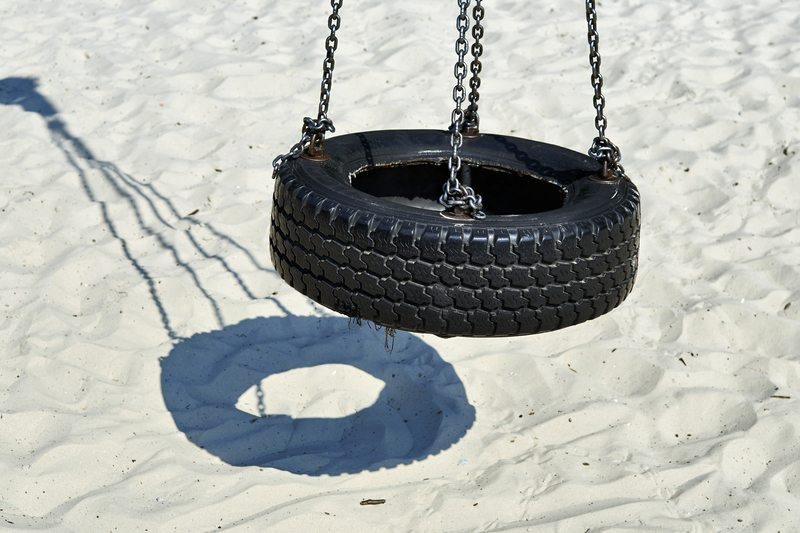Tips for Disposing of PPE Waste Without Risking Public Health
The rise in the use of personal protective equipment (PPE) such as masks, gloves, face shields, and gowns has been an indispensable part of the global response to infectious diseases, especially during the COVID-19 pandemic. However, the improper disposal of PPE waste can pose significant threats to public health and the environment. In this comprehensive guide, you will learn effective tips for disposing of PPE waste without risking public health, ensuring you contribute positively to a safer community.
Understanding PPE Waste and Its Hazards
PPE waste refers to any used or discarded materials such as masks, gloves, gowns, and face shields that are designed to protect individuals against potential exposure to infectious agents. When not disposed of responsibly, these items can:
- Spread infectious diseases to waste handlers, community members, and wildlife.
- Pollute waterways and landscapes, impacting ecosystems.
- Clog sewage and drainage systems, leading to urban environmental challenges.
It's important to recognize that PPE waste is fundamentally different from regular household garbage due to its potential biological risk. Awareness of correct procedures is the first step towards protecting public health.

Best Practices for Safe PPE Waste Disposal
1. Segregate PPE Waste at the Source
One of the cardinal rules for safely disposing of PPE waste is segregation. **Separating used PPE items from general waste** minimizes the risk of contamination. Use color-coded bins and clearly labeled bags for this purpose:
- Yellow bags for infectious biomedical waste (used in hospitals or clinics).
- Designated bins marked "PPE Only" for public areas, offices, or homes.
- Ensure bins are covered and lined with sturdy disposable bags.
2. Handle PPE Waste With Caution
When disposing of used masks, gloves, or face shields, avoid touching the external surfaces. Follow these safe handling practices:
- Remove gloves by turning them inside out and avoid skin contact.
- Do not shake used masks or other PPE to prevent dispersing pathogens into the air.
- Disinfect hands with soap and water or hand sanitizer immediately after removal.
- Never reuse single-use PPE; dispose of it after one use.
3. Securely Contain PPE Waste
Used PPE should be placed in tightly sealed bags to prevent leakage or accidental exposure. Before disposing:
- Double-bag the waste if possible, especially in high-risk settings.
- Tie bags securely to avoid spillage during handling or collection.
4. Label and Store PPE Waste Appropriately
Proper labeling is crucial for safe PPE waste management. Mark containers or bags with "Infectious Waste" or "PPE Waste" to inform waste handlers of potential risks. Store filled bags away from common areas and children or pets until final disposal.
5. Dispose of PPE Waste Through Approved Channels
Never dispose of PPE waste in open environments or with household recyclables. Follow local guidelines for collection and disposal, which may include:
- Using dedicated municipal biomedical waste collection services.
- Bringing PPE waste to authorized drop-off points.
- Arranging for collection from licensed waste management companies in workplaces or institutions.
6. Educate the Community
Spreading knowledge about safe PPE waste disposal practices is vital for minimizing risks. Encourage your workplace, family, and local community to adopt responsible behaviors by:
- Sharing factsheets or infographics on waste segregation and disposal.
- Displaying posters at entry points and near waste bins.
- Organizing workshops or information sessions.
Special Considerations for Households
Household PPE Waste Disposal Steps
While large organizations have protocols in place, households must also take precautions when disposing of used masks, gloves, or shields at home. Here are some guidelines:
- Designate a specific waste bin for PPE and sanitize it regularly.
- Place any used PPE items into a bag, avoid compressing them, and tie it off securely.
- If someone in the household is ill or self-isolating, double-bag all related waste and store it separately for 72 hours before disposal with general waste, following public health recommendations.
- Ensure no children or pets handle or access the waste bag.
- Disinfect hands thoroughly after handling bags and bins.
Guidelines for Workplaces and Public Spaces
Offices, retail stores, and public areas generate significant PPE waste due to increased foot traffic. To manage this safely:
- Install clearly marked, touch-free disposal bins at exits and PPE distribution points.
- Regularly schedule disposal and cleaning of collection bins.
- Train cleaning staff on proper PPE waste handling, including appropriate PPE for themselves.
- Monitor disposal sites to prevent overflow or misuse.
Environmental Considerations and PPE Waste Reduction
While the primary aim is to prevent disease transmission, responsible PPE waste disposal should also consider environmental sustainability:
- Reduce single-use items: Where practical, opt for reusable, washable masks and face shields, especially in low-risk environments.
- Don't recycle contaminated PPE with household recyclables; it damages recycling streams and poses health risks.
- Participate in specialized PPE recycling programs if available in your area.
- Support innovations in biodegradable PPE materials to minimize future waste.
Risks of Improper PPE Disposal
The dangers of improper PPE waste management are real and wide-ranging. Risks include:
- Exposure of sanitation workers and waste handlers to infectious agents.
- Facilitating community spread of viruses through contaminated surfaces.
- Harm to animals: Wildlife can ingest PPE waste, leading to injury or death.
- Blockage of drainage systems, leading to flooding and secondary public health hazards.
Innovations in PPE Waste Disposal and Management
Advances in waste management technologies and public policy are shaping how we handle PPE waste:
- PPE recycling initiatives: Some companies are developing recycling streams for certain PPE types, particularly masks made from polypropylene.
- Introduction of bio-based and compostable PPE items to reduce landfill impact.
- Implementation of smart waste collection systems in urban areas for real-time monitoring of biohazard bins.
Stay informed about new local programs and participate actively to ensure safer, cleaner communities.

Essential Do's and Don'ts of PPE Waste Disposal
- Do: Always wear gloves when handling used PPE waste.
- Do: Place PPE waste in a tight, securely closed bag or bin.
- Do: Follow local government or public health authority guidelines on PPE waste handling.
- Don't: Put used masks or gloves in recycling bins.
- Don't: Litter PPE waste in public places.
- Don't: Flush any PPE waste down toilets or sinks.
Conclusion: Your Role in Protecting Public Health
Practicing responsible disposal of PPE waste is a crucial step in preventing the spread of infectious diseases and safeguarding both public health and the environment. Whether you are at home, at work, or in a public space, these simple yet effective measures can make a significant difference:
- Segregate and contain all PPE waste separately.
- Handle and dispose of items following health authority guidelines.
- Educate others on the importance of proper disposal techniques.
- Support and advocate for sustainable PPE waste management solutions in your community.
Remember: Every mask, glove, or gown you dispose of safely is a step towards a healthier, safer world. Let's work together to minimize risks and promote responsible PPE waste disposal for a better, more sustainable future.
Frequently Asked Questions (FAQ) about PPE Waste Disposal
-
Q: Can I recycle my used PPE items at home?
A: No. Most used PPE is not suitable for recycling as it may contain pathogens and is often made of mixed materials. Dispose of it securely in designated waste streams. -
Q: How long should PPE waste from a quarantined household be stored before disposal?
A: Public health authorities recommend storing such waste for 72 hours in a double-bagged system before disposing of it with general waste to reduce risk for sanitation workers. -
Q: What should workplaces do with accumulated PPE waste?
A: Use licensed waste management services specializing in hazardous and biomedical waste for regular, safe disposal.
By following these tips for disposing of PPE waste without risking public health, you are contributing to a safer society and a healthier planet. For more guidelines, consult your local public health department or environmental agency.
```